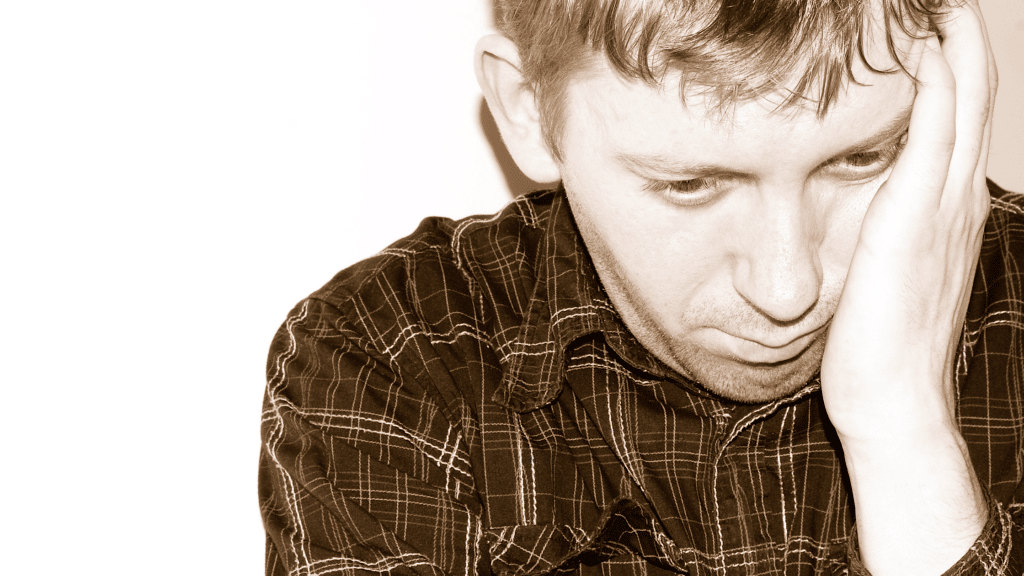Among the challenges of social awkwardness and autism is one of the most well-known and also most uncomfortable topics to discuss.
It gets even more uncomfortable when we look into the countless reasons why: discrimination, drama, controversy, scandal etc. On the one hand, you have autistics struggling with a society that doesn’t understand their challenges. On the other, you have people who also have legitimate reasons for why certain social graces, norms, and boundaries are important.
But despite all the tension this subject has caused, the conversation of autism’s social skill challenges must happen if we are to move forward as a global society.
In this article, we’ll be highlighting two prominent areas where social awkwardness and autism have historically clashed and what has been done to help.
Autism in Schools
Some people think that it is the child psychologist or the pediatrician who are the first to encounter autism. That is not entirely accurate.
The first people who are ever to encounter autism (other than those who have the condition) are parents, and then teachers.
Licensed professionals are the ones capable of diagnosing the condition, but it is parents and teachers who are often first to observe odd social habits and other behavioural issues that indicate autism. That is why addressing the way autism is handled in a school setting has generally been the first priority of many advocacies.
The condition has been known to already be present since birth. The way autism can affect an entire childhood (especially without intervention) often results in many unfortunate accounts of prejudice against those with the disability. We have heard so many stories about people being bullied in school because of ASD. Or worse, we have people with ASD also becoming bullies themselves.
Generally, this has a lot to do with both how parents have been raising autistic children at home, followed by what happens when the time finally comes for them to be separated and placed in a larger school system that puts them in contact with other children. This challenge can be broken down into three parts:
#1. The stability found in a parent’s presence

A defining trait in autism is a need for stability because of the less stable way their brains interpret. the world around them. And in most cases, a major pillar of this stability is in the presence of a parent (particularly mothers).
One can even further suggest that a mother’s voice is most likely the most familiar, reassuring sound to a child because it is one of the most consistent sounds they have heard in the womb. (Side note: This goes with the fact that the ear is one of the first sensory organs to develop during their pre-natal life.)
On the other hand, it is because of a parent’s reassuring presence that young autistics behave very awkwardly in a school setting that separates them. This is where you begin to see their avoidance of other people or lack of participation in class.
#2. Going from the house to the school is a dramatic routine change.

Another infamous challenge in autism is an obsessive adherence to routine. Parents are required to really develop whole protocols to help autistic children transition to important life changes such as a new house, meeting with distant relatives, or even just meet new neighbours.
Going to school for the very first time is very much the same. Things like getting up at the specific time, getting dressed and having breakfast may seem doable enough. But when it comes to helping these kids for what they will see in school and who they will meet, even more preparation is required.
It is imperative for people to understand that this is not just some minor shift like getting them to use a new toothbrush, or telling them that they can no longer fit in their old clothes. This is a change of environment, followed by a change in daily habits and topped off with a slew of new faces, noisier sounds, larger spaces, and then some. That’s a lot to take in for any autistic!
This is without counting the overwhelm of a classroom with too much movement, too much noise, bigger space, bright light, the promiscuity between children (if social distancing is not part of the regulation).
#3. Communication, sensory, and emotional regulation difficulties

Speaking of which, we can never forget that a lot of the issues with routines and stability are heavily influenced by the way their brains process sensory input as well as regulate their emotions.
This also happens to account for why ASD is known as a spectrum. Every manifestation of this condition expresses these difficulties in a variety of ways. Some would have trouble processing voice tones whereas others would have sensory challenges in touch and smell.
There has certainly been an unwarranted amount of negative media attention on autistics melting down and a lot of this has to do with the fact people are still not fully educated on these sensory challenges.
All the best solutions to an autistic’s challenges in school revolve around these three things. That is why parenting communities for special needs kids have been established in order to better organise communication with faculty and school administrators. It is what drives schools to create spaces for special needs kids, where they can recover from their sensory and emotional meltdowns and overload of stimulation as well as seek a counselor.
Still, these remain fairly recent developments and undoubtedly need more support from the wider community. Teachers remain painfully undertrained to create and manage Individualised Education Plans (IEPs) for their special needs students.
Therefore, it remains the job of parents and professionals to start working on intervention as early as possible. For sure, there are no shortcuts and one-size-fits all solutions to helping an autistic kid get used to life in school.
Yet the earlier you start, the earlier you can help them find ways to adjust to meeting new people, learning from teachers and dealing with the unfamiliar environment. It means getting a diagnosis early and knowing what level of autism a child has.
And from there, you can better plan out how to prepare them (or even if they need to attend a formal school at all, such as in the case of those with severe autism). Programs dedicated to addressing sensory issues and behavioural challenges will help tremendously too.
Autism in Public and Adult Life

Now, when it comes to autism in adulthood, a lot of the controversy comes less from the meltdowns and more on how they relate to other people. There are certainly a lot of popular movies and television shows that further explore the social challenges of autistic adults (such as The Good Doctor).
What may occur less to most people is that an adult autistic’s life is still the natural result of what they have been through in childhood. These include a number of scenarios such as:
Having a late diagnosis.
Despite an overwhelming consensus that states autism diagnosis should be done as early as two years of age, there are still quite a number of cases of adults being diagnosed later in life.
To be fair, this is not entirely the fault of their families. It is also not entirely a cause for panic. The alleged ‘rise’ in autism isn’t so much because there are more new cases that have been born, but rather an increase in awareness and changes to the diagnostic criteria.
In other words, adults that would have not been qualified for an autism diagnosis as children before (such as those with Asperger’s) are all grouped within the spectrum now.
This is not to say that the previous lack of inclusion before was a good thing. Many on the spectrum certainly didn’t receive support that they should have had.
It is just that experts simply just didn’t know well enough at the time. But with all the new information that has come up, it is all the more reason that late diagnosis should be avoided to better prepare autistics for adulthood.
A lack of disability sensitivity training.
Even today, despite all the advocacy, the concept of sensitivity training (in any shape or form) meets resistance in some workplaces. A part of this sometimes has to do with how a disability like autism will certainly get in the way of some jobs that involve a lot of social interaction.
In such cases, families will need to have prepared an autistic child for this as they grew up. Transition to adult programs are meant to identify ways that an autistic can use their unique skills and talents, all while still being respectful to the limits described in their autism diagnosis.
A person with milder levels of autism can still participate in regular workplaces provided they have undergone the right therapy and guidance. Meanwhile, those with higher levels can still receive considerable support in adulthood, especially when families continue to be there for them.
Despite that, social awkwardness and misunderstanding autistic behaviour is no excuse for the lack of disability sensitivity training that is meant for everyone. The fact that even police institutions in some countries are not up to speed with this type of training should remain a major concern for advocacy.
Vulnerability to exploitation and bad influence.
If there was only one word that could be used to describe a lot of the most recent controversies involving autistic individuals it’d be this:
The internet.
Take note: It is not accurate to say that the internet is automatically bad for autistics. However, it is just as inaccurate to say that the internet poses no risk to them.
The pros and cons of the subject have been explored very thoroughly. The Internet and social media can create a more comfortable space for autistics to communicate better than face-to-face interaction.
But with that said, it certainly makes them vulnerable to exploitation and negative media influence. The tendencies of autistics to obsess over certain topics can be very dangerous when mixed with their inability to grasp the social consequences of any negative ideas they are exposed to.
Such lack of supervision and care have undoubtedly impacted some autistics upon reaching adulthood. It is certainly possible for an adult autistic to cling to harmful ideas and toxic online relationships to the point that they may even commit crimes.
It is when such tragedies unfold that the dire consequences of autism’s social challenges are brought to light. The good news though is that parents, caregivers, and professionals can all do their part to prevent exploitation and bad influence. All it takes is a willingness to intervene and patiently engage these special kids as they grow up.
Conclusion
For the bigger half of the 20th century, many socially awkward behaviours of special needs people have gradually fallen under the umbrella of autism.
Yet as simple to observe as these behaviours are, the reasons for them are complex and that is why engagement and early intervention are paramount. It is an age-old problem that may not be going away any time soon. But with continued advocacy and better care for autistics, we can all work together to make things a lot less awkward.
The Tomatis® Method and behaviour change in children with autism
Early intervention programs for children with ASD lead to positive long-term outcomes. Programs focus on communication and behaviour skills. These programs give direction, organization, and structure for children with autism.
There are certain behaviours considered asprerequisitesto verbal communication. Some of these behaviours include adaptation to change and emotional response. Based on a study, the Tomatis® Method may help manage these behaviours. It prepares a child with autism to acquire skills needed for language and learning development.
A child with autism who exhibits social awkwardness may benefit from the Tomatis® Method. For more information about the Tomatis® Method, call us at 1300 233 572 or email us at info@tomatis.com.au
References:
- Autism Case Training. (2020). Centers for Disease Control and Prevention.
- Neysmith-Roy, J. (2001). The Tomatis Methodwith Severely Autistic Boys: Individual Case Studies of Behavioral Changes – Joan M. Neysmith-Roy, 2001. Retrieved January 28, 2021, from https://journals.sagepub.com/doi/abs/10.1177/008124630103100105
Françoise Nicoloff
Official Representative of Tomatis Developpement SA in Australia, Asia and South Pacific, Director of the Australian Tomatis® Method, Registered Psychologist, Certified Tomatis® Consultant Senior, Tomatis® International Trainer and Speaker, Co-author of the Listening Journey Series, 40 Years of Experience, Neurodiversity Speaker



